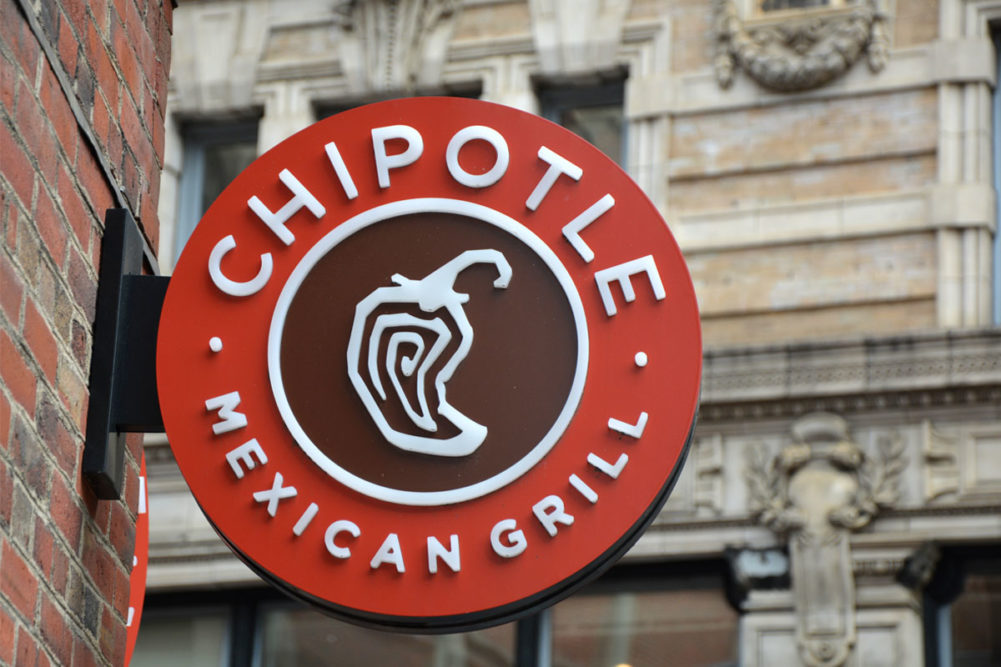NEWPORT BEACH, CALIF. — Higher-income consumers continue to eat at Chipotle Mexican Grill Inc. despite recent menu price increases, while lower-income individuals are buying fewer burritos, said Brian R. Niccol, chairman and chief executive officer.
“While it is difficult to predict the macro impact on future spending trends, we know our value proposition remains strong, and we experienced minimal resistance to our price increase in the quarter,” Niccol said during an Oct. 25 earnings call. “To put it into perspective, our average chicken burrito bowl, which makes up about 50% of our orders across the US, is below $9 in our restaurants. This is a tremendous value when you consider the quality of our food, including our food with integrity standards, the fresh preparation utilizing classic cooking techniques, the customization, generous portions and of course, the convenience and speed.”
Earlier in October, the fast-casual chain raised prices in approximately 700 restaurants to address pockets of outsized wage inflation, said John R. Hartung, chief financial officer.
“Menu prices in each restaurant increased between 2% and 3%, which had a company-wide impact of about 0.5% overall,” he said. “The benefit of menu price increases offset elevated costs across the board, most notably in dairy, packaging and tortillas.”
In the fourth quarter, executives expect the cost of sales to remain at about the same level as the benefit from the menu price increases will be offset by higher beef, chicken, dairy and tortilla costs, Hartung said.
Cooking oil remains pressured by the Russia-Ukraine conflict, he added.
“Paper and packaging, that’s driven significantly by the cost of freight because most of the packaging comes from overseas, from Asia, and it looks like some of the crazy freight costs that we’ve been paying in the past are easing,” Hartung said. “Dairy has been elevated, and so we’re optimistic that there will be some additional supply into next year. So, there’s kind of some pluses and some minuses.
“Overall, what we’re hoping is for mostly stabilization. So, if some of the softening in commodity costs can offset some of the pressure we’re seeing, especially in beef and cooking oil, and if we could break even for a while and not have to see either margins degrade or have to consider another price increase, that would be fantastic to be in that position for a while.”
Net income for the third quarter ended Sept. 30 was $257.1 million, or $9.26 per share on the common stock, an increase from $204.4 million, or $7.26, in the prior-year period. Unusual expenses in the quarter related to one-time employee separation expenses, corporate and restaurant asset impairments, corporate restructuring and performance share modification expenses.
Revenue totaled $2.2 billion, up 14% from $2 billion the year before.
Comparable restaurant sales increased 7.6%. Hartung noted an increase in traffic and a decrease in transaction size.
“As we’re seeing customers kind of return to more normal habits … it’s less digital, more in-restaurant, and even in the in-restaurant channel, there’s a slight decline in the group size,” Hartung said. “What seems to be happening is people rather than working from home and going with family, for example, were bringing dinner home for their family. They’re kind of back to eating more on their own as an individual that they might be out with a group of four people, but they’re all paying for their own lunch.”
During the quarter, the company opened 43 new restaurants and remains on track to open between 235 and 250 new restaurants this year. Additionally, management anticipates opening between 255 to 285 restaurants next year, with a focus on small towns across the United States.
“Overall, small-town restaurants have comparable margins and returns to the company average, and we’re excited about the growth opportunity, which is included in our 7,000 long-term restaurant target,” Niccol said.


